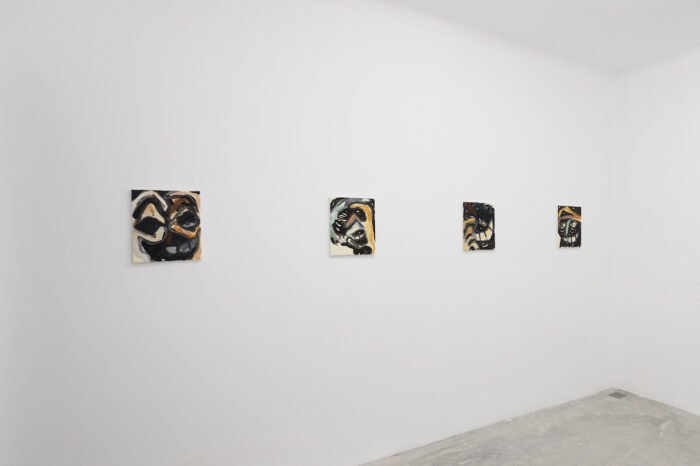Fumes
Ricardo González
02.01.19 – 04.30.19
About:
And men smoked and spit on the ashes.
—Paul Verlaine
The paintings by Ricardo González that are presented in this exhibition are both faces and paintings. Stylistically they are in that paradoxical place where they are one thing and simultaneously another. Where the desire to create beauty is just as intense as the desire to tell stories. The work is a reflection full of details that accumulate and seem so say: where does the one who is painting stand?, the one who thinks?, and the one who with a stick stirs a puddle of tar or heavy blood? (while listening to the false purr of a loving message that only leads to outrage). I am only primitive eyes, I only hold the smoke of the cigar until the puff is unsustainable inside the cheeks of that thing that is no longer a face, but beautiful brushstrokes that owe both to the immediate environment itself, and to the whole history of art from the second half of the thirteenth century until now.
What’s worth seeing, is a painting that is uncanny and aware of its capacity for aesthetic contamination; insisting on the transmission of numerous narratives without forgetting the sense of humor. The point is to rescue the medium of painting as a cultured material -as human flesh is- and to treat it as symbolically charged with all that which does not let us sleep at night. Like a prayer that also accepts the good and the bad.
Painting is letting the hungry tiger out of the cage to meet its maker. To paint is to open an anthrax envelope, proving that the effectiveness of the painting resides in moving people from their seats and confronting them with this calamity of being alive. But look at the mastery, the color and the brushstroke with prehistoric pulse that has been refined by five hundred years of great European painting tradition … But what a need, what a problem! Yes, because it is necessary that these paintings exist. If not, we would be too happy. I mean a happy world; I refer to Huxley and more in regard to these paintings, to the doors of perception that Blake and Morrison spoke about.
It seems that Ricardo’s paintings were done by the members of a tribe in unison. For that reason, as in the blues, the stories, the melody and those sensations of calamitous loss that according to Robert Crumb shine because of their absence in the contemporary space, are true and necessary. I like to believe that the music that accompanies Ricardo’s work exists in a sort of osmotic relationship with the work and that its musicality is only a part of its appearance. That the lyrics of the songs also exist there, below the surface, but they are not silent and it is enough to enter the frequency of each image to listen to those voices, those stories (and inevitably add ours, those that have passed and those that will happen).
You can think with your hands. We see hands, eyes, beautiful brush strokes and electric mud. We see dance and enjoyment inside and outside the darkness. Gonzalez’s paintings appeal to a one-on-one relationship with them; the priest went for a drink, the altar and the pilgrim meet and the skepticism disappears. There is no place for the cynic, the work of art is no longer the spiritual part of the business, the art world has been silent. Goodness.
Excerpt from text, translated. Originally in spanish by:
– José Luis Sánchez-Rull, CDMX




